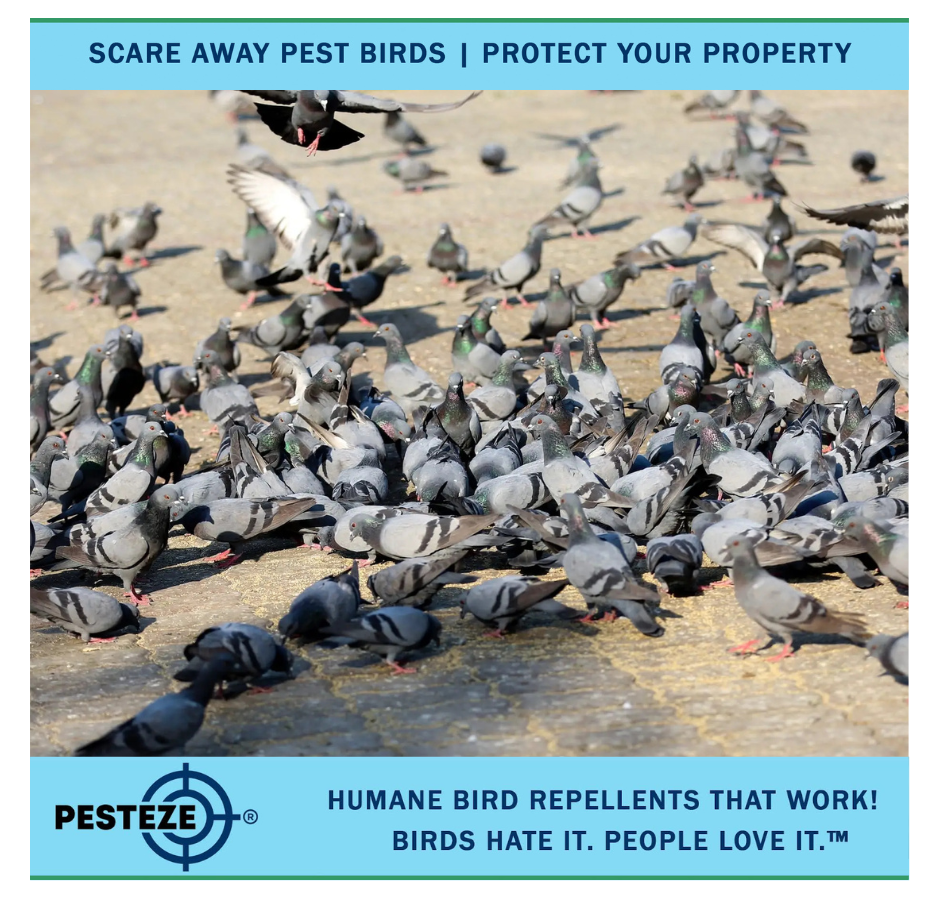PROTECT YOUR ZOO WITH HUMANE BIRD DETERRENCE STRATEGIES

PROTECT YOUR ZOO WITH HUMANE BIRD DETERRENCE STRATEGIES
SUMMARY
Birds can disrupt zoo environments, disturb animals, and create unsanitary conditions. Use humane techniques like netting, sound deterrents, habitat adjustments, and waste management to keep birds from interfering with zoo operations.
FEATURES
- Exhibit Netting: Install netting around exhibits to block birds from entering.
- Sound Deterrents: Use bird distress calls or ultrasonic devices to repel birds.
- Visual Deterrents: Employ predator decoys or reflective surfaces to frighten birds.
- Food Management: Minimize bird attraction by securing animal feed and waste.
- Habitat Modification: Reduce roosting opportunities by trimming trees and vegetation.
- Bird-Specific Areas: Create designated bird zones to redirect their activity.
DESCRIPTION
Zoos are natural attractions for birds, but their presence can cause several issues, from disturbing the animals to creating unsanitary conditions with droppings. To maintain a clean and safe zoo environment, it’s essential to implement bird deterrence strategies that are humane and effective.
The first line of defense is exhibit netting. Netting can be placed around vulnerable exhibits to physically prevent birds from entering areas where they don’t belong. This is particularly useful for outdoor exhibits or areas that attract small birds. Netting should be strong enough to withstand weather conditions while remaining safe for the zoo’s resident animals.
Sound deterrents can also play a key role in keeping birds away from zoo grounds. Ultrasonic devices that emit high-frequency sounds only birds can hear or audio devices that play bird distress calls can make the zoo less attractive to birds. These methods provide an invisible, non-invasive way to deter birds without disrupting the experience for zoo visitors.
In addition to sound, visual deterrents such as predator decoys and reflective surfaces can help scare birds away. Life-like models of hawks or owls positioned around the zoo give the impression that predators are present, discouraging smaller birds from sticking around. Reflective tape, shiny objects, or mirrors can also be used to create sudden flashes of light, which will further repel birds.
Food management is another crucial element of bird control in zoos. Open food sources, whether from animal feed or waste, are major attractions for birds. By properly storing food and promptly cleaning up after feedings, zoo staff can reduce the likelihood of birds flocking to the zoo in search of easy meals. In addition, controlling visitor food areas, such as picnic spots or snack bars, can minimize bird activity around these spaces.
To further discourage birds from roosting or nesting within zoo grounds, habitat modification can be employed. By trimming trees, removing dense shrubs, or eliminating other roosting sites, zoo operators can make the environment less appealing for birds. This minimizes their chances of settling in and becoming a nuisance.
Finally, to balance bird presence with zoo needs, consider establishing bird-specific areas. These designated zones offer an alternative space for birds to gather, away from vulnerable exhibits and visitor areas. Providing these zones creates a natural compromise, allowing some birds to remain without interfering with zoo operations.
By combining these humane deterrent methods, zoos can manage bird populations effectively while maintaining a positive environment for visitors and resident animals alike.
- Tags: Bird Control Guide
- Maanas Mehta


Comments 0